Introduction To The Human Anatomy
The human animal is a very complex multicellular organism in which the maintenance of life depends upon a vast number of physiological and biochemical activities. The sum of these activities enables the human being to live in and utilise his environment and to maintain the species by reproducing.
There is a considerable variation in the complexity of organisms. At one end of the continuum there is the single cell organism such as the amoeba, and at the other, the highly complex multicellular human animal. A cell is the smallest functional unit of an organism, thus a single cell organism is the simplest kind of organism that can exist independently.
In order to survive, each species, simple and complex, must be able to perform certain functions. A single cell organism can carry out all these functions because all the parts of the cell have easy access to its external environment. The inside of the organism is separated from its environment by only one porous membrane, which is described as semipermeable because small particles can pass through it while large ones cannot.
It is not possible for all the cells of the human animal to be in close contact with the environment so, in order to survive, specialisation of cells has evolved and functional specialisation has taken place in parallel with structural specialisation.
The cells of the body are too small to be seen with the naked eye,but when magnified by using a microscope different types of cells can be distinguished by their size, shape and the types of dye which they can be stained in the laboratory.
Groups of cells which have the same physical characteristics tend to have similar specialised functions, and a large number of cells which perform the same functions are described as tissues. Organs are made up of a number of different types of tissue, and systems consist of a number of organs and tissues. Each system contributes to the carrying out of one or more of the vital functions of the body. However, because of specialisation of cells, none of the systems can exist in isolation.
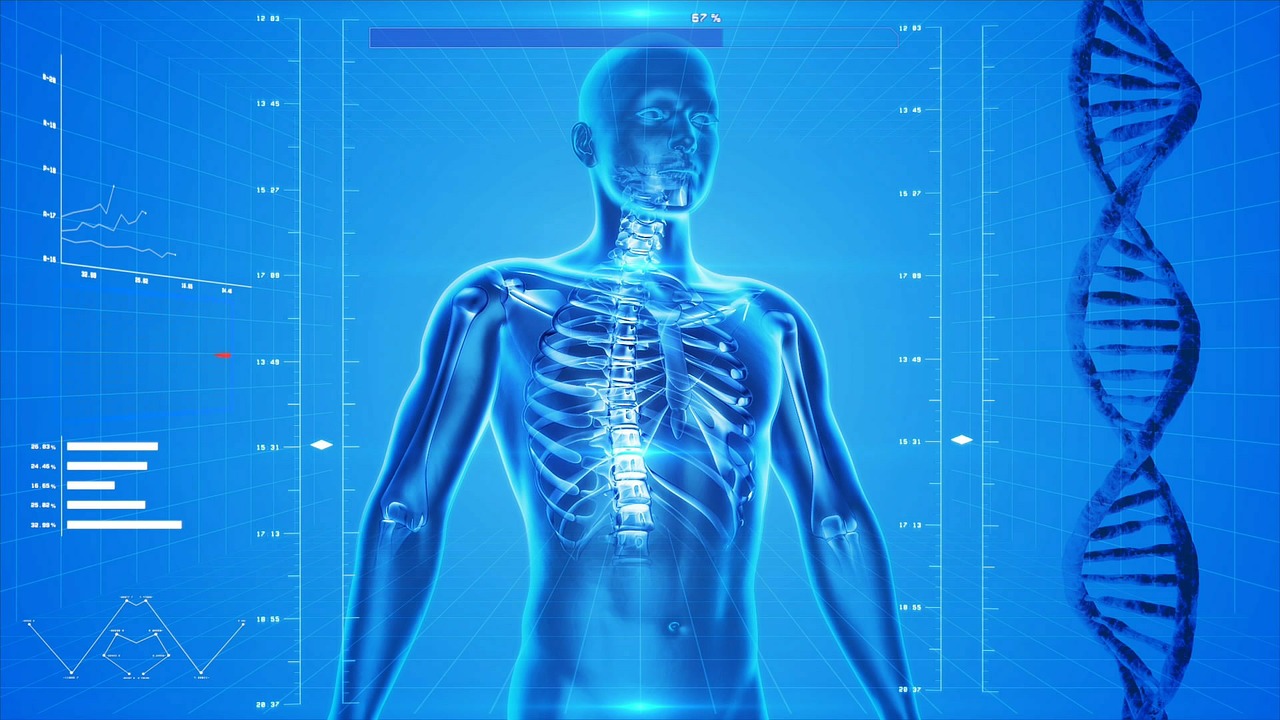
| Needs | System(s) |
|---|---|
| Internal Transportation | Circulatory And Lymphatic |
| Intake of raw materials | Digestive and Respirator |
| Elimination Of Water Material | Urinary,Respiratory and Digestive |
| Internal And External Communication | Nervous, Respiratory-voice production,Skeletal,Muscular,Nervous and Endocrine |
| Reproduction | Male and Female Reproductive Endocrine |
| Movement | Skeletal and Muscular |
Description Of Each System
Internal Transportation
The need for functional specialisation among the cells of the body was mentioned earlier. Because of this specialisation, a sophisticated transport system is needed to ensure that all cells have access to the external and internal environments of the body.
The external environment surrounds the body and provides the oxygen and nutritional materials re' quired by all the cells of the body. waste products of cell activity are excreted into the external environment.
The internal environment provides chemical substances produced by specialised cells.
All living cells in the body are bathed in fluid (interstitial fluid). Oxygen, nutritional materials, chemicals produced by the body, and waste products, pass through the interstitial fluid between the cells and the internal transportation system.
The systems involved are the circulatory and lymphatic.
THE CIRCULATORY SYSTEM
__
This system consists of the blood, the blood vessels and the heart.
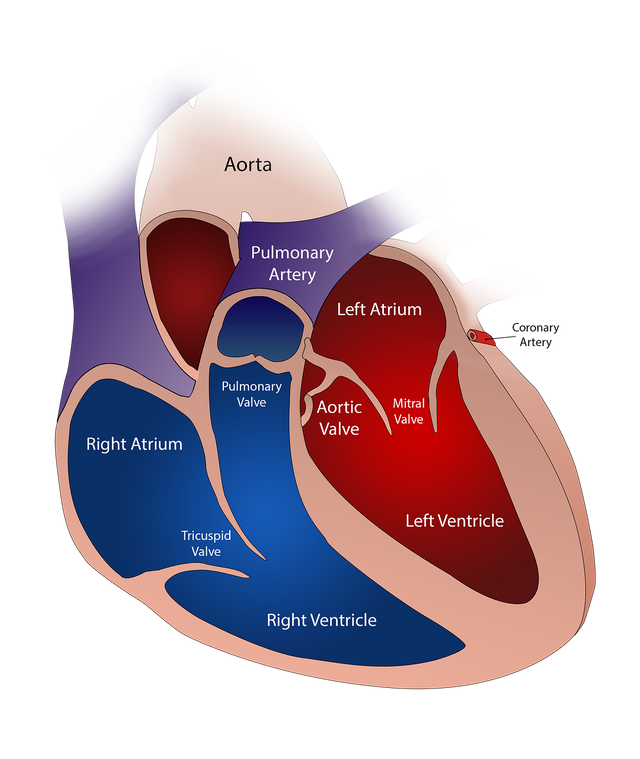
Image by burlesonmatthew pixabay
This consists of two parts-a sticky fluid called plasma and cells which float in the plasma.
The plasma
This consists of water and chemical substances dissolved or suspended in it. These are:
- Nutrient materials absorbed from the intestine
- Oxygen absorbed from the lungs
- Chemical substances synthesised by body cells
- Waste materials produced by body cells to be eliminated from the body by excretion.
The blood cells
There are three distinct groups, which are classified according to their functions.
- Erythrocytes (red blood corpuscles) are mainly concerned with transporting oxygen from the lungs to the body cells. They contain a substance called haemoglobin which combines with oxygen in the lungs and gives it up to the cells in all parts of the body. The supply of oxygen available to cells varies according to how active they are.
When the activity of a group of cells increases, they need and obtain increased amounts of oxygen.
There are about 5 x 1012 erythrocytes in each litre of blood and the adult body contains between 5 and 6 litres of blood.
- Leucocytes (white blood cells) are mainly concerned with protecting the body against the successful invasion by micro-organisms, some of which may cause disease. There are several different types of leucocyte which carry out their protective functions in different ways.
These cells are larger than erythrocytes and are less numerous: 4 x 109 to 11 x 109in each litre of blood.
- Thromboeytes (platelets) are tiny cells which play an essential part in the very complex process of blood clotting. A blood clot is a ‘plug’ consisting of blood cells and fibrous material which forms in the cut or torn ends of a blood vessel. It prevents excessive loss of blood. There are 100 x 109 to 500 x 109 thrombocytes in every litre of blood.
THE BLOOD VESSELS
There are three types:
The arteries, which convey blood away from the heart.
The veins, which return blood to the heart.
The capillaries, which link the arteries and veins. These are tiny blood vessels with very thin walls consisting of only one layer of cells. Between these cells there are very small openings or pores, which allow some of the constituents of blood to pass through, such as oxygen, nutritional materials, some chemical substances synthesised in the body and waste products from cells. Larger sized substances, such as erythrocytes and large molecule proteins, cannot pass through the semipermeable capillary walls.
THE HEART
The heart is a muscular sac. It pumps the blood into the blood vessels which transport it:
To the lungs (pulmonary circulation) where oxygen is absorbed from the air in the lungs and at the same time‘carbon dioxide is excreted from the blood into the air
To the cells in all parts of the body (general circulation)
The layer of muscle in the heart wall is not under the control of the will. At rest, the heart contracts between 65 and 75 times per minute, but the rate may be greatly increased during physical exercise when the oxygen and nutritional needs of the muscles which move the limbs are increased. .
The rate at which the heart beats can be counted by taking the pulse. This is a wave of expansion of artery walls which occurs when the heart contracts and pushes blood into the aorta, the firrst artery of the general circulation. The pulse can be felt most easily where an artery lies close to the surface of the body and can be
pressed gently against a bone. The wrist and the temple are the sites most commonly used for this purpose.
THE LYMPHATIC SYSTEM
This system is a subsidiary of the circulatory system. It consists of a number of lymph vessels which begin as blind end tubes in the area containing tissue fluid between the blood capillaries and the cells.Structurally they are similar to veins and blood capillaries but the pores in the walls of the lymph capillaries are larger than those of the blood capillaries. This means that water containing large molecule substances, fragments of damaged cells and foreign matter such as micro-organisms drain away from the interstitial spaces in lymph vessels.
The two largest lymph vessels empty lymph into large veins near the heart.
There are collections of tissue called lymph nodes situated at various points along the length of the lymph vessels. Lymph from the interstitial spaces is filtered as it passes through the lymph nodes, and micro-organisms and other noxious substances are removed.
A. FOOD
Food is one of the sources of raw materials which cells must obtain from the external environment, but it is not always in a form which cells can use. A specialised system has developed to modify or digest food to make it usable.
THE DIGESTIVE SYSTEM
This system consists of:
The alimentary canal which begins at the mouth and continues through the pharynx, the oesophagus, the stomach, the small and the large intestines, the rectum and the anus.
Glands* which form digestive enzymes‘i and discharge them into the canal through ducts or little tubes. Many glands are in the walls of the alimentary canal but those situated outside the canal with ducts leading into it are the salivary glands, the pancreas and the liver.
Glands are aggregates of secretory cells enclosed within a sheet, or membrane, of connective tissue.
Enzymes are chemical compounds which cause, or speed up, chemical changes in substances with which they are in contact. They are organic catalysts.
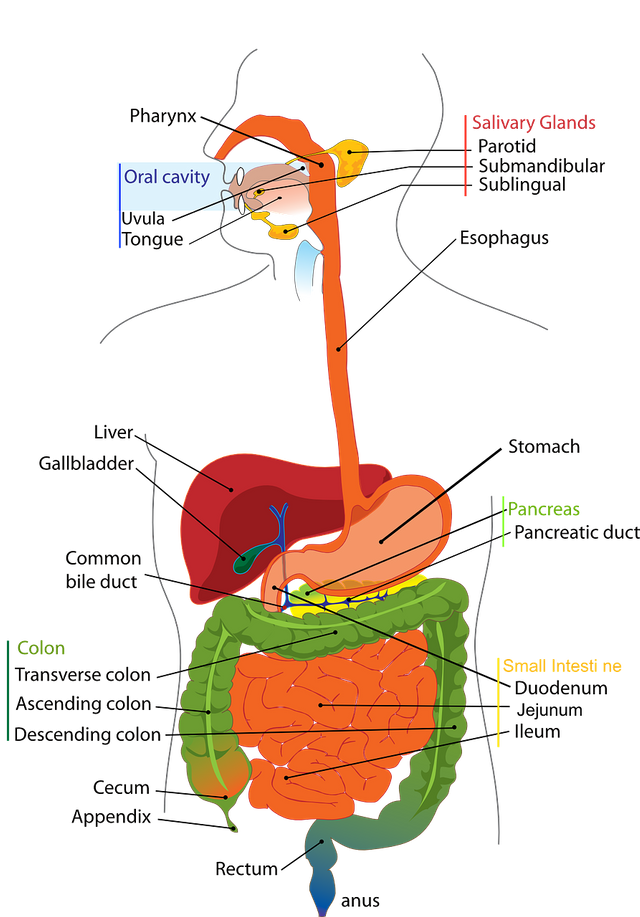
Image by ciker pixabay
Food, which is chemically complex, is taken in at the mouth and simplified by physical and chemical means to forms in which it can pass through the walls of the alimentary canal into the blood to be transported around the body.
The substances absorbed from the alimentary tract are:
Water
Carbohydrates in the form of monosaccharides Fats in the form of fatty acids and glycerol
Proteins in the form of amino acids
Mineral salts
Vitamins
These substances provide the materials required by the body for:
| Function | Food |
|---|---|
| Energy production | carbohydrates and fats |
| Cell building and repair | Proteins |
| Chemical synthesis | Mineral salts, proteins, fats and carbohydrates |
| Medium for all chemical activity | Water |
B. OXYGEN
Oxygen is a gas which makes up about 21 per cent of the atmospheric air. It is essential for human life because most of the chemical activities which take place in the cells can only occur in its presence. Oxygen is involved in the series of chemical changes which result in the release of the energy from nutrient materials. This energy is essential for all the cellular activities.
This is the sum total of the chemical activity in the body. It consists of two groups of processes:
- Anabolism, which is the process of building or synthesising new products
- Catabolism, which is the breaking down of substances, either for excretion as waste or to provide raw materials for anabolism
The release of energy from nutritional materials, such as carbohydrates and fats, is a catabolic process.
THE RESPIRATORY SYSTEM
This is the system through which oxygen is taken into the body from the external environment and carbon dioxide, a waste product of cell metabolism, is excreted. It consists of a series of tubes or respiratory passages which carry air from the nose to the lungs and a network of blood capillaries in the lungs. The respiratory passages, which are continuous with each other, are the nose, the pharynx (also part of the alimentary canal), the larynx (voice box), the trachea, two bronchi (one bronchus to each lung), a large number of bronchial tubes which subdivide and lead to millions of tiny air sacs called alveoli. Air may also enter the pharynx through the mouth.
The lungs are two in number and are situated one on each side of the heart in the thoracic cavity. They consist of bronchial tubes, alveoli, blood vessels and nerves all of
which are supported by connective tissue. Each alveolus is surrounded by a dense network of blood capillaries.
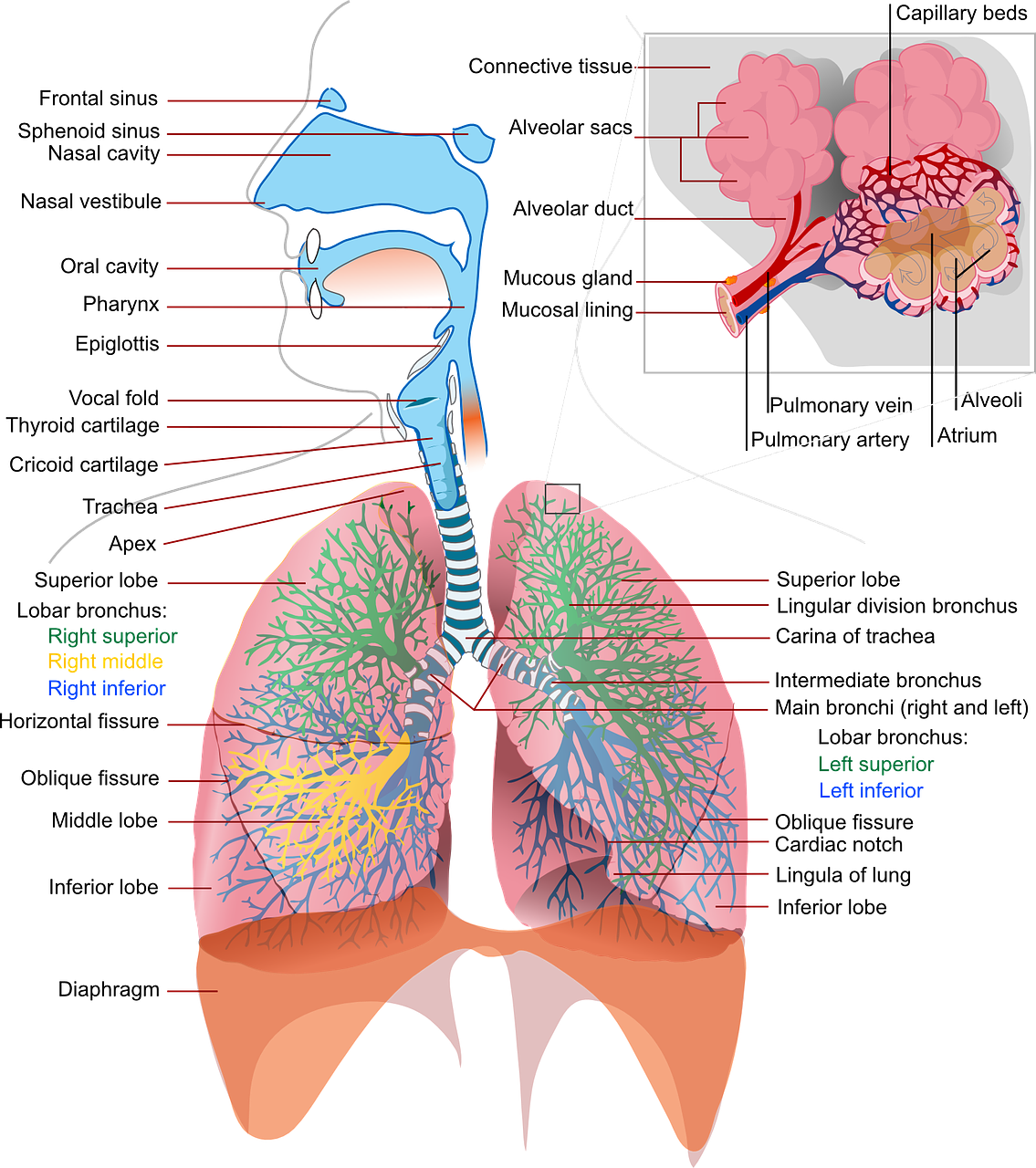
Image by ciker pixabay
Air containing oxygen and carbon dioxide is breathed into the lungs, filling the alveoli, and it is separated from the blood in the capillaries by two semipermeable membranes. These are the walls of the alveoli and the capillary walls, each of which is only one cell thick. Oxygen is in higher concentration in the alveoli so it passes from the alveoli to the blood; carbon dioxide is in higher concentration in blood so it passes in the opposite direction, from the blood to the alveoli.
Oxygen is carried in the blood in solution in the blood water and in chemical combination with haemoglobin in the red blood corpuscles. The cells throughout the body obtain oxygen and get rid of carbon dioxide by the reverse process. Oxygen is in higher concentration in the blood than in the cells and the interstitial fiuid around the cells, so it diffuses down the concentration gradient from the capillaries to the cells. Carbon dioxide, which is a waste product of cell metabolism, is in higher concentration outside the capillaries and diffuses down the concentration gradient from the cells to the blood.
Breathing is the regular iniiation and deflation of the lungs which maintains a steady concentration of atmospheric gases in the alveoli, that is, the constant intake of oxygen and output of carbon dioxide.
Nitrogen, which is present in atmospheric air, is breathed in and out with oxygen and carbon dioxide but, in this gaseous form, it cannot be used by the body. The nitrogen which is needed by the body is present in protein foods, for example in meat and fish.
Elimination of Waste Materials
Substances in the body are regarded as waste materials if they cannot be used by the cells and if their accumulation will upset the fine balance which must be maintained between chemical substances in the internal environment. One of the most important of these is the acidity / alkalinity balance for which the scale of measurement is pH. The scale extends from 0 to 14 with 7 the neutral point. From 7 to 0 represents increasing acidity and from 7 to 14 increasing alkalinity .
Varying quantities of acids and alkalis are produced by metabolism. It is an important function of the systems involved in elimination to control excretion of these substances in order to maintain the optimum blood pH, which is in the region of 7.4. In addition, other waste materials which do not affect the pH are also excreted. The respiratory, urinary and digestive systems are those involved in elimination.
THE RESPIRATORY SYSTEM
This system excretes carbon dioxide, as described above. Carbon dioxide dissolved in water forms an acid which must be excreted in appropriate amounts to maintain the optimum pH of the blood at about 7.4.
THE URINARY SYSTEM
This system is involved in: .
Maintaining the appropriate balance between water and substances dissolved in it, and between acids and alkalis "
The elimination of the waste products resulting from the catabolism of cell protein (urea and uric acid)
The system consists of:
2 kidneys, situated one on each side of the vertebral column on the posterior wall of the abdominal cavity
2 ureters, one of which extends from each kidney to the bladder
The urinary bladder, situated in the pelvis The urethra, which extends from the bladder to the
exterior
THE DIGESTIVE SYSTEM
The large intestine excretes faeces which contain:
Food residue which remains in the alimentary canal because it cannot be digested and absorbed.
Bile from the liver, which contains the waste products resulting from the catabolism of erythrocytes.
Communication
In order to live in and be able to adapt to the external environment, the individual must be able to communicate with it. Similarly, communications are necessary for the stimulation, regulation and co-ordination of activities within the body. In both cases communication involves a cycle of receiving, collating and giving information.
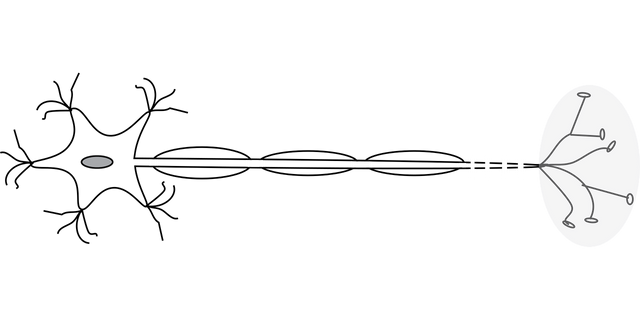
Image by Nickyhayes
External Communication
The Nervous System
The brain receives communications from outside the body through the five senses. These senses and the special organs which are involved are:
| Sense | Organ(s) |
|---|---|
| Sight | The Eyes |
| Hearing | The Ears |
| Smell | The Nose |
| Taste | The Tongue |
| Touch | The Skin |
Although the senses are considered different and separ ate from each other, one sense is rarely used on its own. For example, when the smell of smoke is perceived, other senses such as sight and hearing are likely to be used to try to locate the source of the smoke. Similarly, taste and smell are closely associated in the enjoyment, or otherwise, of food.
Nerve endings are stimulated by phenomena outside the body and the resultant nerve impulses are transmitted to the brain by nerve fibres for ‘interpretation’ or perception.
The brain collates this material with information obtained from the memory, and the result is co-ordinated and regulated communication with the outside world. The nervous system consists of :
The brain, situated inside the skull
The spinal cord, which extends from the base of the brain to the lumbar region and is protected from injury by the bones of the vertebral column
Nerve fibres, of two types: sensory or afferent nerves, which provide the brain with ‘input’ from organs and tissues, and motor or efferent nerves, which convey nerve impulses from the brain to organs and tissues
VOICE PRODUCTION
This mechanism provides a means of communication with the outside world. Sound is produced in the larynx as a result of blowing air through the vocal cords during expiration. What is known as speech is the manipulation of sound by the contraction of the muscles of the throat and the cheeks and the movements of the tongue and lower jaw.
THE SKELETAL AND MUSCULAR SYSTEMS
These systems combined produce the posture and movements associated with non-verbal communication with the outside world. The skeletal system provides the bony framework of the body, and movement takes place at joints between bones. The muscles which move the bones lie between them and the skin, and they are stimulated by the part of the nervous system which is under the control of the will. Some non-verbal communication, for example changes in facial expression, may not involve the movement of bones.
Internal Communication
THE NERVOUS SYSTEM
The brain receives information from inside the body by means of: 1. Nerve impulses transmitted by nerve fibres
- Chemical substances circulating in the blood which supplies the brain
The brain collates this information and responds by initiating efferent nerve impulses and secreting chemical substances. These pass from the brain to other parts of the body to stimulate, regulate and co-ordinate the activities of other organs and systems. Some of this activity is under the control of the will but much of it goes on without the individual being conscious of it. For example, the individual is not usually aware of minor changes inthe heart rate; emptying of the stomach; dilatation of the pupils of the eyes.
THE ENDOCRINE SYSTEM
This system consists of a number of endocrine glands which are situated in different parts of the body. They communicate with each other, and with other organs and tissues of the body, by means of chemical substances called hormones which they synthesise. The glands are ‘informed’ about conditions within the body by variations in the concentration of chemical substances in the blood which supplies them and by nerve impulses. Changes in the amount of a hormone secreted result in stimulation or depression of activity in a target organ.
Movement within the External Environment
The essential purposes of the physical movement of the whole, or parts, of the body within the environment are:
To obtain food and water
To avoid injury
To reproduce
Most of the body movement is under the control of the will and is initiated consciously. The exceptions are some protective movements which are carried out before the individual is aware of them, for example, the reflex action of removing the finger from a very hot surface.
The systems involved in movement are the skeletal and the muscular.
The Skeletal And Muscular Systems
The bones of the skeleton provide the framework for the body, and movement is achieved when the muscies which lie between the skin and the bones contract and move them at the joints.
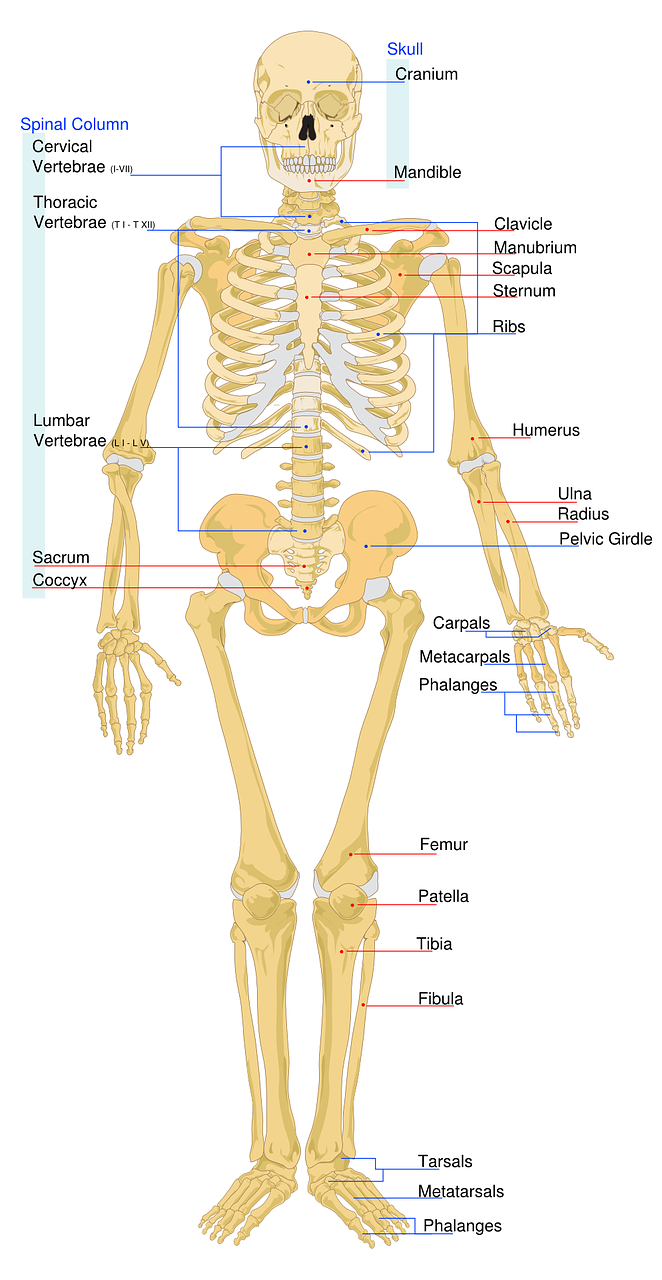
Image by ciker Pixabay
The central part of the skeleton is described as the axial skeleton.
The bones of the limbs and those which attach them to the axis make up the appendicular skeleton.
The axial skeleton consists of:
The skull
The vertebral column
The sternum or breast bone
The ribs
The appendicular skeleton consists of:
The bones of the upper limbs, the two clavicles and the two scapulae
The bones of the lower limbs and the innominate bones of the pelvis
THE AXIAL SKELETON
THE SKULL
The skull is described in two parts, the cranium which contains the brain, and the face. It consists of a number of bones which develop separately but fuse together as they mature. The only movable bone is the mandible or lower jaw.
Functions.
The various parts of the skull have specific and different functions:
The cranium protects the delicate tissues of the brain.
The bony eye sockets provide the eyes with some protection against injury and give attachment to the muscles which move the eyes.
The temporal bone protects the delicate structures of the ear.
Some bones of the face and the base of the skull give resonance to the voice because they contain cavities called sinuses which are filled with air. The sinuses have tiny openings into the nose.
The bones of the face form the walls of the posterior part of the nasal cavities. They keep the air passage open during breathing.
The maxilla and the mandible provide alveolar parts in which the teeth are embedded.
The mandible is the only movable bone of the skull and chewing food is the result of raising and lowering the mandible by contracting and relaxing some muscles of the face, the muscles of mastication.
THE VERTEBRAL COLUMN
This consists of 24 separate movable bones (vertebrae) plus the sacrum the coccyx.
The vertebral column is described in 5 parts and bones are numbered from the skull downwards : * 7 cervical
- 12 thoracic
- 5 lumbar
- 1 sacrum (5 fused bones)
- 1 coccyx (4 fused bones)
The first cervical vertebra, called the atlas, articulates with the skull. Thereafter each vertebra forms a joint with the vertebrae immediately above and below. In the cervical and lumbar regions more movement is possible than in the thoracic region.
The sacrum consists of five vertebrae fused into one bone which articulates (forms joints) above with the 5th lumbar vertebra and an innominate (pelvic) bone at each side.
The coccyx consists of the four terminal vertebrae fused into a small triangular bone which articulates with the sacrum above.
Functions
The vertebral column has several important functions:
It protects the spinal cord. In each bone there is a hole or foramen and when the vertebrae are arranged one above the other. The spinal cord, which is an extension of nerve tissue from the brain, lies in the canal formed by the foramina.
Adjacent vertebrae form openings for the passage of the spinal nerves. There is a small foramen on each side of the vertebral column through which nerves from the spinal cord pass to all parts of the body.
In the thoracic region the ribs articulate with the vertebrae forming joints which move during respiration.
THE APPENDICULAR SKELETON
The appendages are:
- The upper limbs and the shoulder girdle.
- The lower limbs and the innominate bones of the pelvis.
Functions
The appendicular skeleton has two functions:
Voluntary movement
The bones, muscles and joints of the limbs are involved in voluntary movement, which may range from the very fine movements of the fingers associated with writing, to the coordinated movement of all the limbs when the whole body moves in activities such as running and jumping.Protection of delicate structures
Structures such as blood vessels and nerves lie along the length of bones of the limbs and are protected from injury by the muscles and skin. These structures are most vulnerable where they cross joints and where bones can be felt near the skin.
References
F. H, Netter(2010) Atlas of Human Anatomy(5th edition)
S. Jacob(2002) Atlas of Human Anatomy
Gray's Anatomy of the Human Body: 29th American edition
Gray's Basic Anatomy By Richard Drake; A. Wayne Vogl; Adam W. M. Mitchell.
V. C, Scanlon Essentials of Anatomy and Physiology .
Henry Gray(1918) Anatomy of the Human Body 20th edition.
Lecture Notes
Gif by @hboi

With the major objective of steemSTEM to advance Science, Technology, Engineering and Mathematics on the Steem blockchain. In the event that you wish to help the steemSTEM to promote their major objectives, which can be done by contributing on STEM content and using the tag #steemstem , also support @steemstem creators ,join the curation trail and you can also delegate SP to steemstem.
The newest member of @stemng managed by @greenrun and @gentleshaid
All images are Creative Commons or public domain, no copyright infringements have occurred.
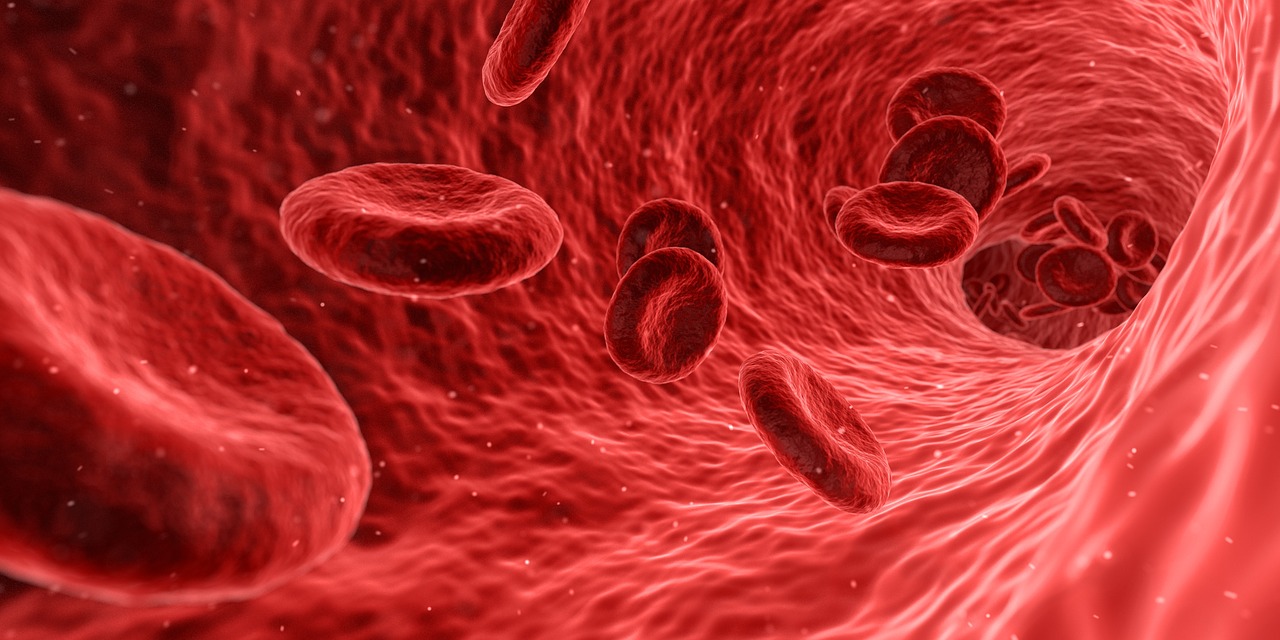
Who is your target audience for a post like this?
Those in the field of Anatomy and Physiology and the general steemstem community.
But why would they come here for this info and not just Google it?